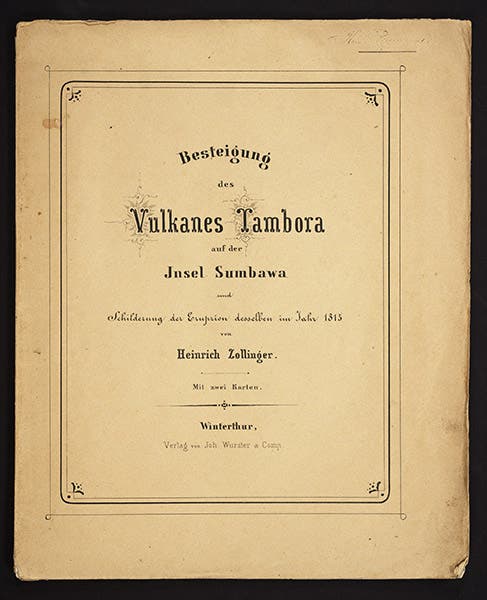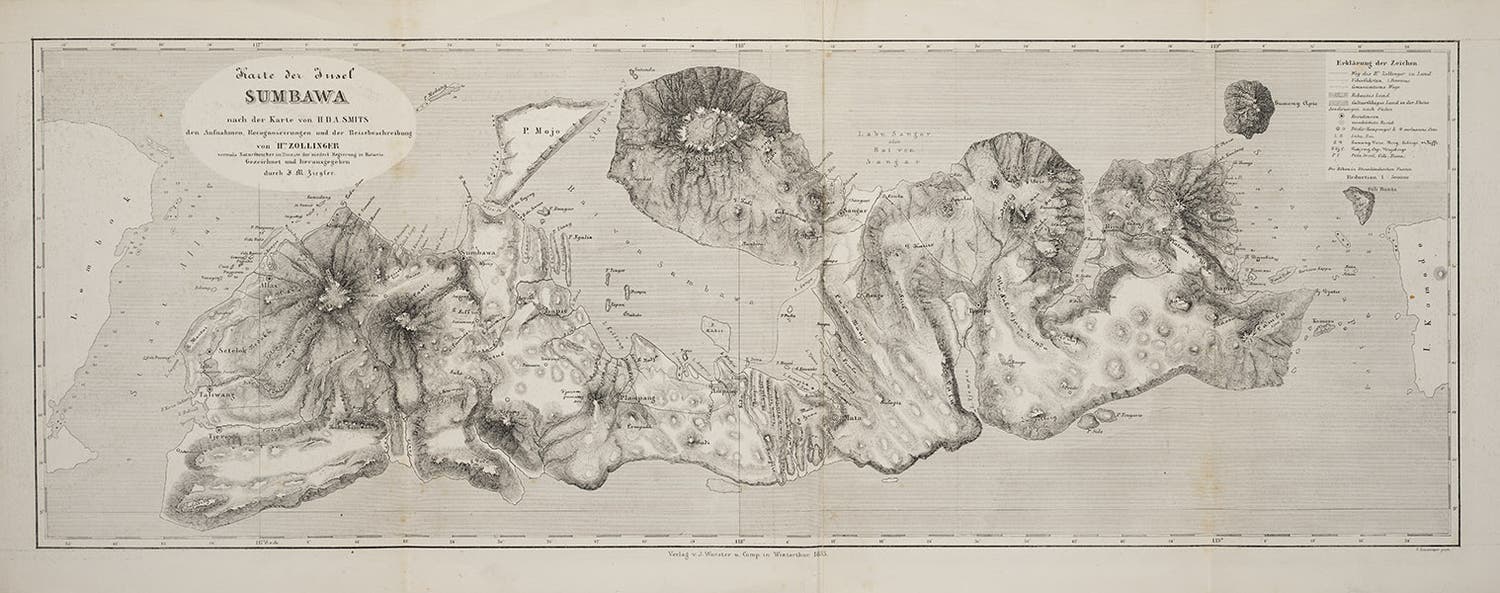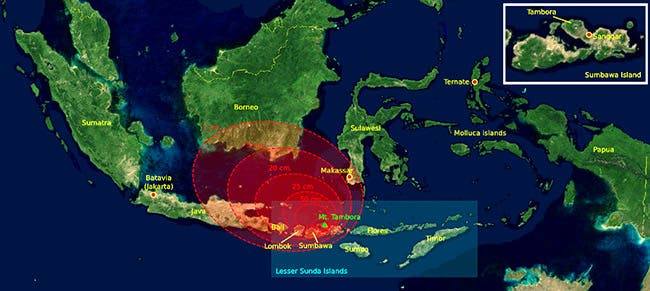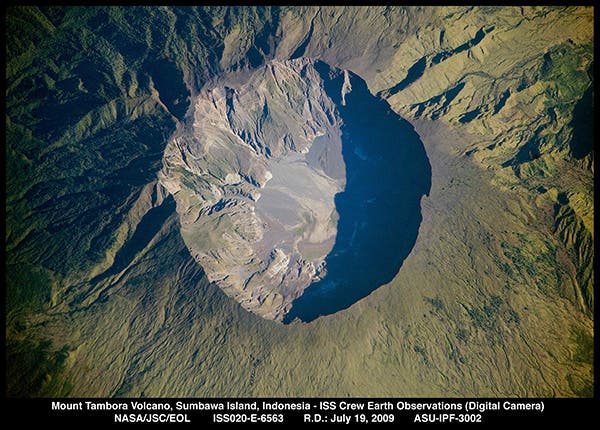Scientist of the Day - Heinrich Zollinger
Heinrich Zollinger, a Swiss geologist, was born March 22, 1818. Three years before his birth, in 1815, the volcano of Tambora on the Indonesian island of Sumbawa exploded catastrophically--the most cataclysmic volcanic eruption of the past 10,000 years. The eruption was about ten times more powerful that the more famous eruption of Krakatoa in 1885, and about 100 times greater than the eruption of Mt St Helens in 1980. Zollinger may not have been alive when Tamora erupted, but he played an important role in its history, because, hard as it is to believe, he was the very first person to visit the scene of the eruption, climb the caldera, and estimate the amount of material ejected. This was in 1847, 32 years after the event. We do not know why it took so long for a volcanologist to visit the site of the Tambora event; perhaps it was the remoteness of the area, or that fact that the region was completely devastated by the eruption and remained so for decades.
Zollinger's Besteigung des Vulkanes Tambora auf der Insel Sumbawa und Schilderung der Erupzion desselben im Jahr 1815 (Ascent of the Volcano Tambora on Sumbawa island and Depiction of the Eruption of the year 1815, 1855, second image) is extremely valuable for those trying to reconstruct the event, especially since there are no contemporary eye-witness accounts or drawings of any kind, as far as we know. There are two engravings in Zollinger's 22-page pamphlet. One, a double-folding plate, shows a map of the area at the time of his visit; we reproduce the entire map (third image), and a detail of the Tambora crater (first image).
The other engraving is the result of an idea original with Zollinger – a map that shows the estimated ash fall in the region, with isolines denoting the fall-off of deposits as one moves away from the Tambora crater (fourth image). We now call such a map an isopach map, and this may be the first such map, at least the first to measure ash fall. It is interesting to compare Zollinger's estimates to those on a modern isopach map of Tambora (fifth image).
After Zollinger paved the way, one would think that geologists would have descended on the area in droves, but no one seems to have followed up Zollinger's visit until 1913. Zollinger died two years after his book was published, of malaria. Perhaps that is one reason why later volcanologists were reluctant to make the trip. It is not relevant to Zollinger, but no discussion of the eruption of Tambora can fail to mention its most famous byproduct, Mary Shelley's Frankenstein. Mary (then Mary Godwin) and Percy Bysshe Shelley were summering in Switzerland in 1816, and had taken a place near the Villa Diodati that Lord Byron had rented. The weather was so rainy, miserable, and cold, because of the eruption the year before, that they were forced to stay inside and compose ghost stories to amuse themselves, and this is where and when Mary wrote the first draft of Frankenstein, or, The Modern Prometheus. She was all of 18 years old when she wrote it, and 20 when it was published in 1818. If, as it is often said, something good comes out of every tragedy, then this would be the good bit, although it is rather outweighed on the other side of the scale by the 70,000 souls who lost their lives when Tambora exploded.
A photo was taken of the Tambora crater from the International Space Station in 2009 (sixth image). I hope they snapped another one in 2015, the two-hundredth anniversary of the eruption. Dr. William B. Ashworth, Jr., Consultant for the History of Science, Linda Hall Library and Associate Professor, Department of History, University of Missouri-Kansas City. Comments or corrections are welcome; please direct to ashworthw@umkc.edu.











